The future of retail / Global
The shopping forecast
A special report on the state of global retail and how to go about fixing it.
Depending where you choose to fill your basket, your consumer experience from the moment you enter a shop through to leaving with your purchases may well leave you feeling either like a king or a complete timewaster for the retailer you just parted money with. While the current state of the market should have all consumers feeling like monarchs, a recent tour of the world’s biggest cities reveals that most retailers are up to the same old tricks and are doing very little to encourage shoppers to spend.
It would be easy to blame Macy’s recent store closures (11 at press time) and massive lay-offs on the flaccid US economy. Ditto the uninspired interiors and visual merchandising at Nordstrom and Neiman Marcus stores in California and Massachusetts.
The collapse of Woolworths and the 30,000 people they supported in the UK (not counting their suppliers and sub-contractors) could be attributed to Prime Minister Gordon Brown’s less than stellar economic stewardship. And badly hit retailers in Spain could also wheel out similar or closely related stories. The only problem with using a drop in GDP as a catch-all excuse for a sorry retail market is that it glosses over the simple fact that most businesses that have had to close completely, cut back or curb their ambitions have been heading this direction even when times were good.


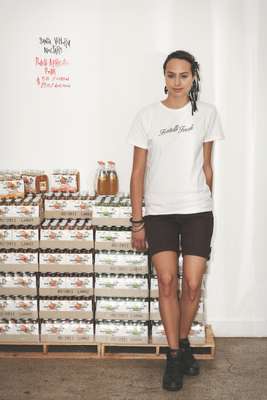


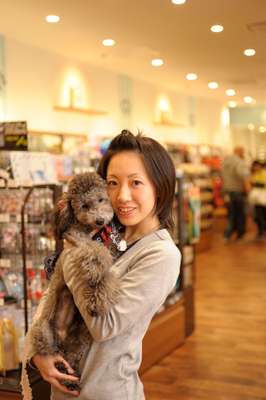
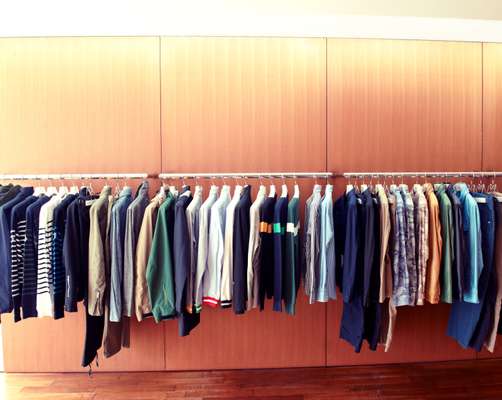
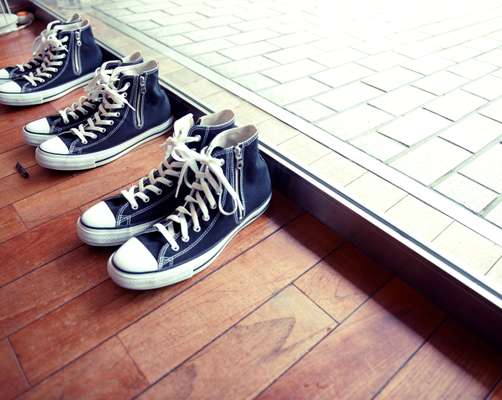
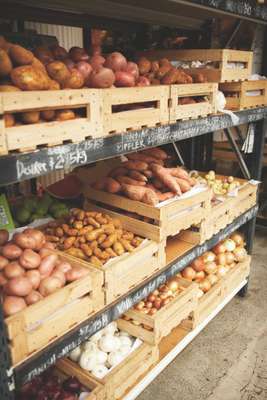
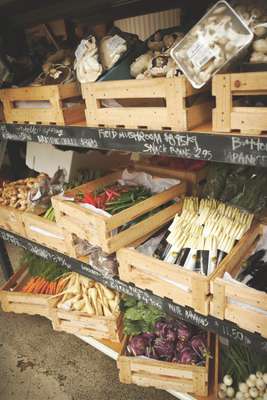
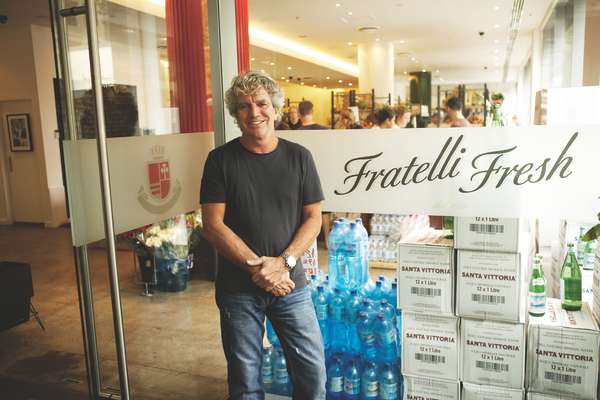
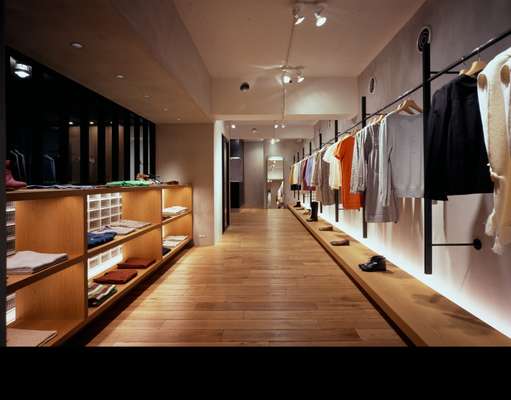
Some who disappeared from our streets died of natural causes – old-age (simply losing the will to fight) or chronic illnesses (labour issues and multiple personalities). Others met more savage ends at the hands of ruthless intruders who attacked them in their own backyards.
More still succumbed to the painful private equity plague that sliced, shaved and chopped till there was nothing left on the bone and consumers failed to recognise the brand they rather liked until it fell victim to a business plan drawn up by a 26-year-old who had never even spent time on a shop-floor during his or her college years, let alone visited the country where said acquisition took place.
Across much of Europe and on the other side of the Atlantic the response to the chain of events that has flattened the economy has been to cut prices or dumb down the product offer or both – neither of which are long-term solutions. For many mega-retailers the shift from the buying and selecting of products for a department or speciality store to “sourcing” started long ago. It’s one of the reasons similar looking tat is now on sale from Basel to Brisbane. At a time when the family in Murcia, Spain or Portland, Oregon wants a little retail escapism they’re getting a reduced experience from start to finish – the same ads (if any), the same brands that haven’t been given a new home on the shop floor for five seasons and scarcely a familiar face manning the floor.
Across the US the adored retail catalogues that drive footfall and web traffic have been cutting their trim size, photo quality and paper stock, so is it any surprise that there’s been a decline in sales for many? When the same store format that was launched a decade ago is rolled out again and again, is it really worth crossing town to see that new mall? The shops will all be the same and stuffed with a predictable mix of products.
For this survey we travelled to Barcelona, Madrid, New York, Vancouver, Osaka, Tokyo, Seoul, Singapore, Zürich, Taipei, Hong Kong, Bangkok and Sydney and found sagging exports and record lay-offs most places we touched down. What we also found were companies big and small who are more than carving through the swells of this storm and offering clever lessons in how to maintain traffic, margins and customer loyalty. If the North Americans and Europeans are sealing the airlocks and hoping nothing cracks, the Koreans and Japanese are upping their service, communications and overall games.
During a studio interview for The Monocle Weekly in Tokyo, CLSA retail analyst Jeremy Tonkin perhaps summed up the Japanese approach best. “The key thing with Japanese retailers compared to their overseas counterparts is that Japanese retailers actually try to understand what the customers actually want – that’s true whether we’ve got a bear market or a bull market. When times are tough Japanese department stores actually increase their service to the customer rather than decrease it.” For retailers, developers, investors and shoppers this might sound obvious but outside Japan very few are putting it into practice.
Over the next pages we offer up a few opinions that should be employed by anyone in the business of selling products from a shop floor, interviewed the sharp minds we’d employ to design and curate our stores and introduce you to a couple of concepts that you wish you’d invented or invested in.
Reader warning
Before you flip to the masthead and fire off an angry e-mail to one of our editor’s asking why there’s so much Japan in this survey and why we’re rather harsh on the US and UK we have a question for you? Have you ever been to Japan? If so, have you ever shopped in Japan? (It would be hard not to.) If yes, you’ll know we’ve offered up the smallest sample of a nation literally bursting with retail ingenuity and integrity.
If not, don’t fire off that note until you’ve sampled it for yourself and visited a few of the gems we’ve uncovered over the past two years. Japan’s economy may well have been in the dumps for far too long but it’s made it the most gracious place to part with cash, be inspired and receive peerless service. Breathtaking innovation, Japanese culture and fierce competition are what keeps it moving forward.
Top 20 retailers
Our carefully curated hot list of mini and massive shops from our global travels
- Demasié in Barcelona for beautifully packaged confectionery and great interiors.
- Roden Gray in Vancouver for its rough interiors but very gentle staff.
- Folk and Oliver Spencer in London for Made in Britain menswear and good service.
- JR Leder in Berlin for bespoke men’s leather bags made at the back of the shop.
- Monmouth Coffee Company in London for loving what they do and knowing their beans
- Rough Trade East in London for its handwritten recommondations and outstanding vinyl and CD selection.
- Truck Furniture in Osaka for when you want to re-engineer your life.
- Ciclic in Barcelona for its recent renovation and overhaul of art titles, international DVDs and hard-to-source magazines.
- Eslite in Taipei for every form of printed matter available 24 hours a day.
- Isetan food hall in Tokyo for the breadth of choice, sensory overload and uniforms.
- Odin in New York for its ever-surprising and eclectic mix of menswear for any season.
- Frédéric Malle in Paris for its limited-edition perfumes and focused vision.
- James Perse’s Beverly Hills branch for its activewear range, laid back but attentive staff and indoor/outdoor interior.
- Svenskt Tenn in Stockholm because the older we get the better we look in Josef Frank.
- Hakusan in Tokyo for its perfectly designed ceramics and bijou, museum-like setting.
- Johnny Farah in Beirut for comfortable house shoes and a handcrafted ethic.
- Bi Rite in San Francisco. The type of business you’d be proud of if you had the idea to do a neighbourhood grocery store.
- Pierre Hardy in Paris because their desert boots are best.
- Lisn in Kyoto and Tokyo’s Aoyama for the best incense, smart staff and packaging.
- Aspesi’s Milan emporium for its airy rooms, cheeky merchandising and consistency.
Dispatches
Dispatches: 01
Paris
The French capital is bracing itself for a tough year’s trading. Clothes shops – particularly the mid-range sector and individual boutiques – are suffering, with sales down 3 per cent in 2008. The fashion chain Morgan went into administration in December and department stores such as Galeries Lafayette and Printemps have seen a marked slow-down in sales, particularly due to the absence of tourists hit by the strong euro.
The top end of the market is not immune either: in December, Chanel said it was cutting jobs across the company but it has seen good surprises in London and Tokyo. One exception is Hermès which has kept sales healthy with a focus on tradition and an attempt to give each store its own vision. While those around it were suffering, Hermès announced in February its annual profit was up 10.2 per cent.
The crisis has not been so kind to everyone. Europe’s biggest flea market at St Ouen has seen sales drop by a quarter. Fnac, the entertainment retail chain, announced in February that it was cutting 200 jobs in its Paris shops after what the board called a “brutal drop” in business.
The crisis has, however, given a boost to one retail platform – online shopping, a sector which grew by 30 per cent across France last year. In the hope that prices will be cheaper, consumers are logging on more than ever before. One website, shoe retailer spartoo.com, saw winter 2008/2009 sales figures explode by 200 per cent. Many Paris stores, such as high-end interior designer Pachyderme, are making their online debuts in an attempt to woo new clientele.
Dispatches: 02
London
Let’s start with the bad news: in the UK last year 54 retail chains, employing some 74,539 people, went into administration. Woolworths and its pick’n’mix counter is no more; society wedding list favourite General Trading Company and Whittard tea merchants are among those who have run into trouble. Who cares? It’s a fair question: many of the shops closing down on London’s high streets were well past their sell-by dates and will be missed by few.
Others are as much victims of shifting habits: did music store Zavvi go down because of the economy or because people now download music or buy CDs from Amazon (and its store concept is tired)? So far the worst pain has been felt by the weak and wounded. Indeed in Britain retail sales rose 0.7 per cent in January after persuasive discounting by the stores and the government dropping VAT, the country’s sales tax, by 2.5 per cent.
Then there’s the fall in the price of sterling that has lured plane-loads of euro-walleted visitors. Many retailers are too busy ringing up sales to fret about the doom merchants. Walk around London on a Saturday and of course you’ll find some stores populated by just a grim-faced shop assistant, but others have queues of eager customers at their doors. Try getting a table at Ottolenghi or a drink at the Monmouth Coffee House – you’ll need patience and elbow work. Shopkeepers are going to have to work harder. Their sales may be down for some time, but as long as they are selling value for money products and an experience (that includes service), they should survive.
Dispatches: 03
New York
Across all sectors it’s been a tough winter in New York with stores from Brooks Brothers to Circuit City to Sergio Rossi closing branches. The number of empty shops is now around 12 per cent – up from around 8 per cent last year and 6 per cent in 2007. But there are plenty who see this as an opportunity.
“In the last 10 days, I have offers on all the empty Madison spaces because they’ve cut their rent by a third,” says Faith Hope Consolo, of Prudential Douglas Elliman Real Estate. “And there are no stores closing in the Meatpacking District. And Tribeca is not suffering,” she insists. Armani and Diesel are opening big new spaces on Fifth Avenue. Matthew Williamson and Thom Brown have arrived in the Meatpacking District and Topshop opens in SoHo this spring. In fact, it’s a great time to open a shop and some of the best deals are in the Bowery where rents are as low as $100 per sq ft.
Dispatches: 04
Milan
The effects of the financial downturn have yet to be fully felt in Milan. The Italian fashion capital profited from sterling’s demise as Via Montenapoleone leapfrogged London’s Bond Street to become the world’s fourth priciest retail location. Nevertheless, the city’s shops entered December fearful after surveys indicated 50 per cent of Italians would significantly cut budgets. One of the hardest hit was luxury jeweller Bulgari, which saw sales slide 10 per cent. Prada and Tod’s opted for preemption, discounting items before Christmas.
In January, many shops started sales ahead of the date stipulated by law. But steep discounts only pulled in 2 per cent more business than 2007. Department store Coin fared better, reporting a 40 per cent jump at its revamped flagship. Benetton, meanwhile, raised concerns about 2009 profits as it fears competition from Abercrombie & Fitch.
Dispatches: 05
Hong Kong
It takes more than a recession to get Hong Kong shoppers down. There have been few closures, give or take the odd Krispy Kreme (foiled by high rents) or electrical retailer. There are, however, aggressive and protracted sales everywhere, from top of the range department stores through to the restaurants offering HK$1 meals.
Recessionary winds are also bringing change to this scrap of land best known for its malls of luxury brands. Now the smart set takes off to the suburbs for a spot of outlet shopping. Vintage stores are booming. Brand Off, a Japanese retailer of second-hand luxury goods, has opened in Hong Kong to exploit the downturn.
Finally, retailers are copying Macanese casinos and appealing to mainland visitors, although these are less in evidence as China’s economy slows.

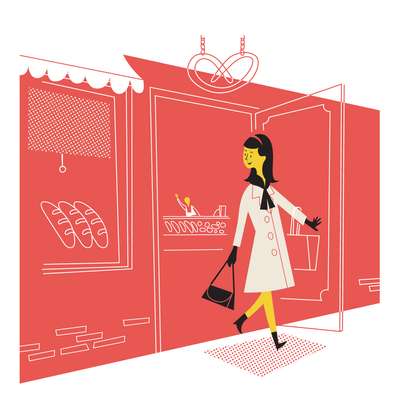
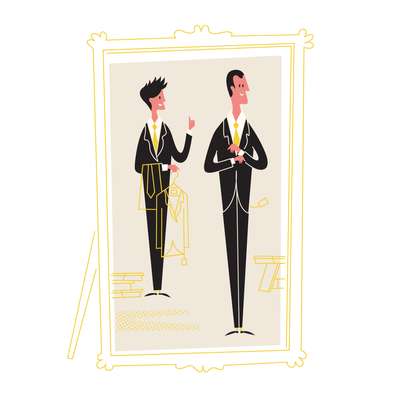


Our ten point plan
Our paramedic chopper is fuelled up, our doctors’ bags are rammed with remedies and we’re ready to descend on the roof of any department store or the parking lot of a listless mall. Before we arrive you might want to try our 10 first aid tips to resuscitate the ailing patient or precinct
Drop rents!
There’s a very simple reason why cities such as Berlin, Stockholm, Helsinki and Fukuoka are teeming with interesting, innovative small retailers. Talented minds aside, these cities have seen the birth of whole communities of switched-on entrepreneurs because of cheap rents. Despite the fact that many small businesses simply can’t keep up their payments, rental prices in markets such as London (is it just us or is Notting Hill fast becoming a ghost town?) are still off the charts and are stifling creativity. There’s a wave of out of work men and women begging for the right conditions to define new neighbourhoods and challenge the market with fresh retail concepts.Carve it up
The shape and scale of retail spaces are simply too large to be either affordable or intimate. Landlords sitting in desirable areas might do well to start thinking about carving up spaces to more manageable footprints (from 10 to 50 square metres is about right) to allow for small owner-operators to build sustainable business plans and also get cosy with their clientele. We’re speaking from first hand experience here.Take a cue from Wonderwall
One of the best tricks in Masamichi Katayama’s (see interview page 70) arsenal is that he creates interesting facades that invite you in without you even knowing why. Our cover store Soph does this best and is a trick worth copying.‘Hello!’ ‘Goodbye!’
It costs you nothing. It breaks the ice. It’s respectful and it works. We’re not asking to be followed around or pampered as we navigate aisles but basic, polite personal acknowledgement is what binds civilizations and is the ignition fluid of commerce.Staff should both serve and inspire We return to our cover store and assistant Masamichi Takahashi (see profile on page 73) because not only does he delicately help you try things on and fetch sizes (sadly too few garments fit our gai-jin frames) but we always leave swinging a bag inspired by the staffs’ impeccable, super cool style that sits almost uncomfortably with their hushed, dainty service.
Add value – offer treats
Usually before we get to the door at Soph we find we’re being chased by Takahashi or one of his colleagues offering gifts. Recently we’ve enjoyed keychains and exquisitely branded chopsticks. It’s simple touches like this that create Saturday morning queues outside.Yes I’d love to have it wrapped. For free? Even better
If staff are going to huff and puff and get tape stuck in their hair as they attempt to offer simple gift wrapping they should perhaps find a new career. Perfect packaging needn’t be time consuming or expensive and is another simple brand pillar to allow a store to stand above its neighbours. Well, at least outside Japan.But make them pay for it another way The last thing you want as a retailer is for a customer or a gift recipient to not know more about you or even where to find you. This means that there’s full licence to not only fill the bag with well designed collateral (maps, stickers, business cards, look books) while they’re not looking but also arrange more printed items by the door nicely so they gather them for friends.
Mix it up – every day
People will return to a shop when it constantly updates – particularly when they’re never quite sure what’s entirely new. This demands more advanced exploration from them and also more potential purchases. At the world’s major trade fairs this also means store buyers have to go that one extra aisle even if their ankles are bleeding to find something that no one else in their market will have. Such commitment is the essence of the world’s most successful, smart stores. Japanese buyers are world class in this arena. Many other buyers will usually go with the safe bets and they can often be found in the bar when they should be scouring for the star items of the season.Talk to your neighbours
Exclusivity is all well and good but a sense of community’s more pleasant. Shopkeepers need to engage with their neighbours, lobby for improvements to their immediate environment, develop joint marketing initiatives, hold street parties and generally make shoppers feel like they’re being hugged rather than fleeced.
And here’s a bonus: Arrogance and an attitude is neither chic nor clever. We’ll happily take a toothy, cheesy “have a nice day” over a glare from even the most gorgeous shopkeeper any day.

Clever concept 01: Osaka
Creative approach to canine spend
These days in Japan, you’re as likely to run into a well-dressed Chihuahua as a boisterous toddler. The new Hankyu Department Store at Nishinomiya in Osaka is rolling with the times by dedicating a floor to dogs. Hello! Dog is canine heaven, offering its customers a dog food shop, clinic, beauty parlour and dog run.
An exclusive lift serves the fourth (dog) floor and fifth floor car park. There’s no fee to join the 300 sq m dog playground, although owners have to bring proof that their pooches are properly immunised. Hankyu has also created a separate area for children where parents can sit and read with them.
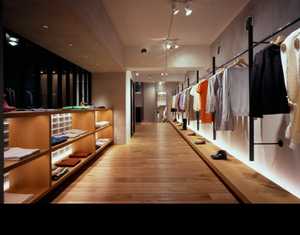
Who’d design our shop
Wonderwall’s Masamichi Katayama is our top shop choice
Masamichi Katayama is Japan’s best-known shop designer. His company Wonderwall has produced interiors that range from global flagship stores for Uniqlo to Tokyo boutiques for labels such as Drawer, APC and A Bathing Ape.
How is the current economic downturn affecting business?
There are still people who want to do projects. In this economy competition between shops is tougher so we have to try harder and give better service. It’s good for the consumer.
What are the elements for a successful store?
First, the approach to a shop is very important. For the new APC store in Tokyo, we thought of the shop as a bungalow and put decking in front of the entrance. Sometimes it works well if customers can see right to the back of the shop from the outside. The alternative is to close up the front of the shop and then surprise the customer once they’re inside. Secondly, I’m a designer but I try to look
at each project from a consumer’s point of view. You have to do something to make customers want to come back by giving a store a certain depth. Through design you can guide shoppers through interiors but it can only do so much. It doesn’t matter how good the interior is if the products aren’t any good. Service is also very important.
Four design stars
We ask some of the world’s leading retail designers to give their forecast
- William Sofield
Studio Sofield, New York
Why should owners invest in shop design in a tough market?
Retailers need to invest for the long term instead of feeling they need to reinvent and rebuild every five years. If you get it right the first time you have something dynamic that can evolve and last a lifetime.
What positive things will come out of this period?
Hopefully we will see a renaissance of craft and a movement away from the superfluous. We need to consider the evolution of a project – not only a building’s initial function but also its reuse.
What are you working on?
Residential projects from Aspen to St Petersburg, Tom Ford’s store in LA, the Santa Eulalia flagship in Barcelona and a refresh of the SoHo Grand.
- Martí Guixé
Designer, Barcelona/Berlin
Why should owners invest in shop design in a tough market?
It’s always essential. Not only in tough markets. If stores are well designed it helps to get lots of visibility for the brand and sales.
What positive things will come out of this period?
New business models will emerge and brands will have to rethink their businesses or play a radical card if they want to stay afloat.
Which shops are getting it right?
Ones that play with context, attitude and interaction, that create extensions of their brands but are also good at shop displays and creating good shopping experiences
What are you working on?
A bar in the Museo d’Arte di Nuoro in Sardinia and a Desigual shop in the new Barcelona airport.
3. Roberto Baciocchi
Baciocchi & Assoc, Arezzo
Why should owners invest in shop design in a tough market?
It depends on the product. If it’s in step with today’s fashion, has appeal and brings something new, then it makes sense.
Are people playing it safe?
In times of crisis companies are forced to innovate if they don’t want to close. It’s actually harder to spend on innovation when the market is not having problems.
What shops are getting it right?
Those that develop their own look and personality.
Who’s getting it wrong?
Those that are positioning themselves in a niche in which they don’t belong.
What projects are you working on now?
Several projects for the Prada Group in Paris, Hong Kong and Osaka.
4. Tiziano Vudafieri
Vudafefieri Saverino, Milan
What positive things will come out of this period?
We will no longer see brands that sell €4,000 coats only for them to be out of style in six months. Those brands that don’t know who they are, or only ask for a contemporary look in their store, will be gone.
Which shops are getting it right?
Hermès, Louis Vuitton, Prada. These are historic brands that know who they are. Each drawer in the store is perfect. They have focal points throughout the store.
Who’s getting it wrong?
Ferragamo. The stores feel like they could be part of another brand. They have no DNA of the label.
What projects are you working on now?
LK Bennett in London, Pucci in Portofino, Roger Vivier in Bal Harbour.
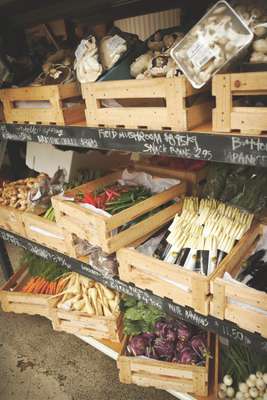
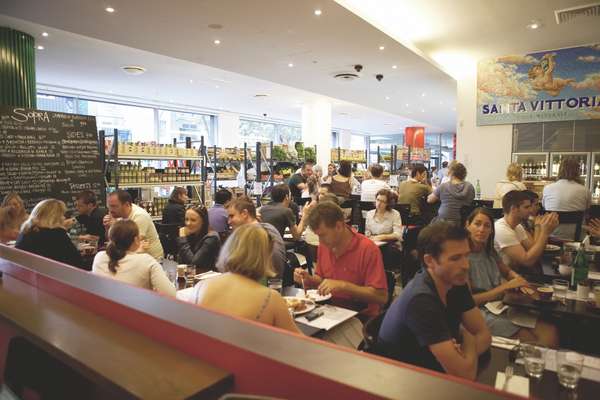
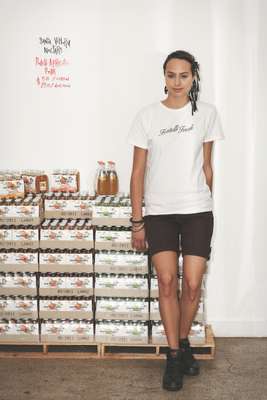
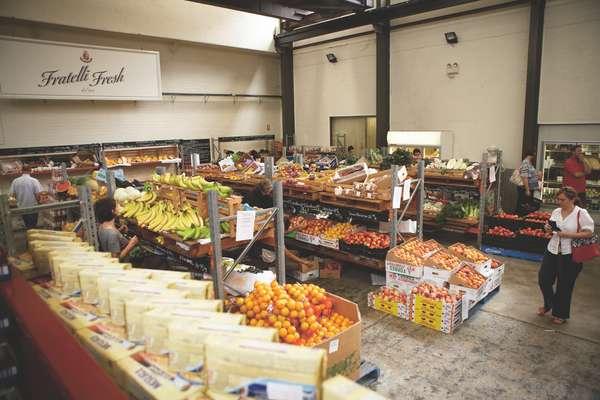

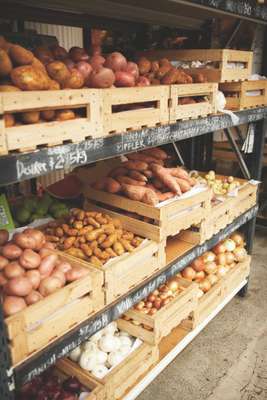
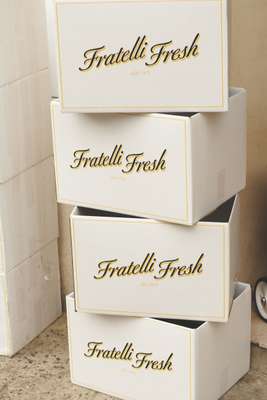




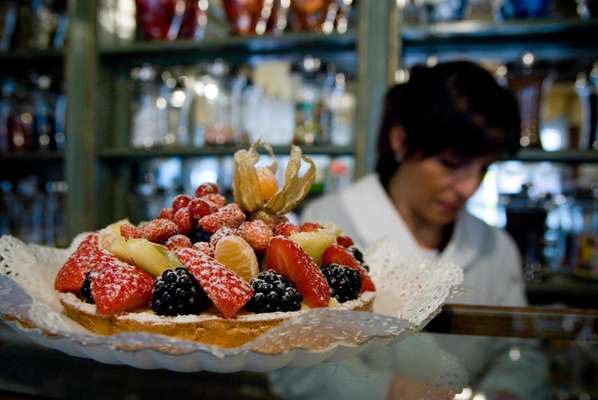

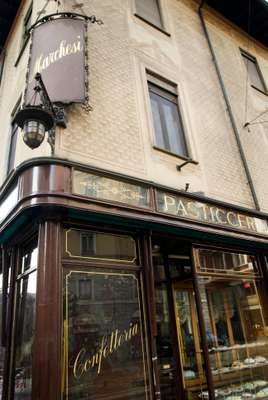
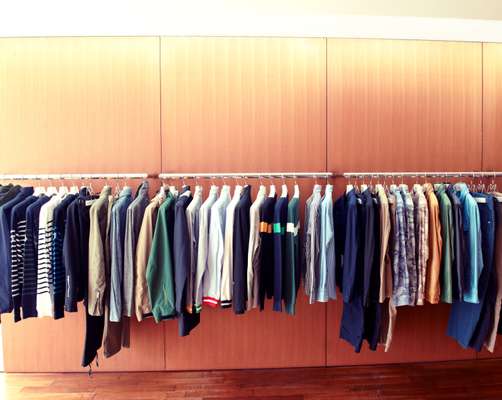

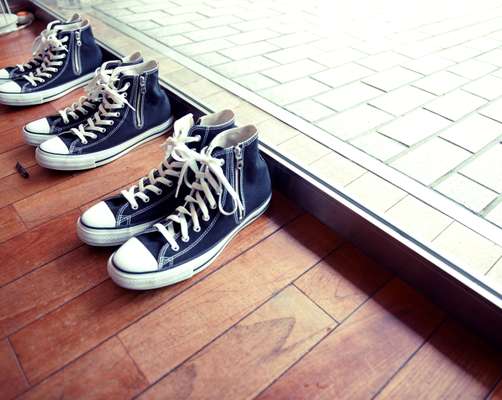


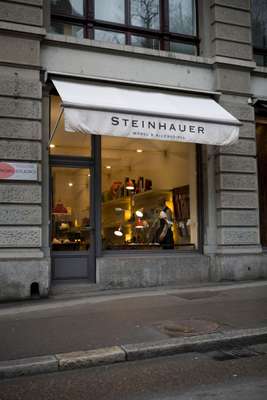
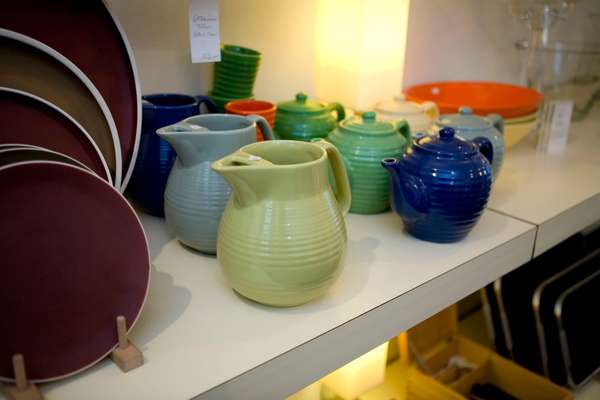

Five we admire
From a Sydney food store to a Swiss design emporium, here are a handful who have mastered the basics
1. Fratelli Fresh
Sydney
Sydney’s Fratelli Fresh smashes the supermarket mould – it’s warmth and buzz makes you want to hang out. Airy and light, the aisles are laden with seasonal fresh produce in beaten up wooden crates and the fridges are stacked with simply wrapped blocks of Grana Padano.
There are lessons to be had – a large blackboard explains what’s in season and offers a few recipes, and out the back you can take free cookery classes.
Meanwhile, as an Italian nonna conjures fresh pasta, cookery staff grab a mushroom or sprig of dill from the supermarket shelves to add to the meals served at the perpetually packed Café Sopra in the midst of it all.
But the strange thing is Fratelli prices, which are comparable to any large supermarket; a plate of kick-ass fare at Café Sopra costs AU$22 (€11).
“It’s real. It’s really alive,” Barry McDonald states swiftly when asked why the two supermarkets in Waterloo and Potts Point he runs with brother Jamie have turned over $20m (€10m) in four years. Barry, who has had forays into restaurants, internet grocery delivery and fine food distribution, predicts – with big supermarkets continuing to dominate in their usual “boring” and “sterile” manner – it will give him all the more space to think about the lighting and music he will use in the next Fratelli’s that he opens.
fratellifresh.com.au
Five things we love about Fratelli Fresh:
1. Home-like vibe
2. Excellent produce
3. Supermarket prices
4. Top quality café
5. Community feel with cooking classes and blackboards with recipes
2. Santa Eulalia
Barcelona
It might be four generations of tailoring experience that brings its loyal customers back to Santa Eulalia; it could also be its neat edit of labels in the multibrand division that inspires faith; or it may simply be its prime location at the high end of Paseo de Gracia.
Santa Eulalia opened its doors in 1843 as a tailor and couturier that expanded steadily, before scaling back in recent years under the stewardship of Luis Sans, a direct descendant of the founder. The original property is being refurbished by William Sofield and the entire operation has moved next door to a temporary space that’s made of completely recycled materials to underline its eco-awareness and ephemeral setting.
santaeulalia.com
Five things we love about Santa Eulalia:
1. Evolution from old-fashioned to contemporary craft.
2. No compromise on materials or expertise.
3. Environmentally sustainable space.
4. Family-owned enterprise.
5. Community spirit. — ST
A tighter collection will including Bruno Cucinelli and Loro Piana for men and Balmain and Halston for women.
3. Marchesi
Milan
The line between café/bar and bakery often gets blurred in Italy as shopkeepers try to wear several hats. The result is that time-pressed baristas, tasked with making coffee, panini and cocktails, end up reheating pre-baked croissants while pastry chefs, preoccupied with catering, underdeliver on the cappuccino.
Family-run Marchesi steers clear of such pitfalls. Since 1824, the Milanese bakery has stuck to its strengths, making cakes and tarts fresh daily on the premises according to traditional Lombard recipes. While a coffee machine was added in the early 1900s, the family has never let it crowd out the core business. “We have never been interested in sandwiches or doing a lunch menu just because the caffè was put in,” says owner Angelo Marchesi. “It would get in the way of the baking, especially the smell.”
Today’s patrons are content to eye the pastries with cream and fresh fruit as they drink their coffee at the bar, which, like the rest of the interior and facade, has kept its original look. There’s also continuity among staff, as turnover is tiny. “Our regulars like to see a familiar face,” says Marchesi. “It makes them feel more at home.”
pasticceriamarchesi.it
Five things we love about Marchesi:
1. The city’s best panettone wrapped in the best packaging.
2. Baristas in black tie pulling precise shots of espresso.
3. The shop’s original 19th-century panelling and coffered ceiling.
4. Classic logo imprinted on bite-sized house chocolates.
5. Open on Sunday mornings.
4. Soph.
Tokyo
The Harajuku district of Tokyo is notoriously fickle when it comes to fashion. One minute a boutique has queues round the block, the next it’s closing down. One shop that has stood the test of time is Soph, which has had an unswervingly devoted following since it opened a decade ago. Founded by Hirofumi Kiyonaga, who is responsible for design, Soph sells functional, fashionable clothes for men – a complete wardrobe, from underwear to waterproof jackets.
Soph has three labels – FC Real Bristol (FCRB), a sportswear brand made with Nike; Uniform Experiment (UE) a more formal range of suits, jackets and accessories designed by Kiyonaga and Harajuku supremo Hiroshi Fujiwara; and Sophnet, which has everyday casual wear including soft checked shirts, cotton twill trousers and nylon parkas.
Kiyonaga has thrived where other bigger labels have failed, successfully navigating his business through changes in fashion and economic ups and downs. He keeps a low profile, preferring not to give interviews or to be the public face of the brand. There are nine Soph shops in Japan but Kiyonaga still works with a small team who have been with him for years. He collaborates with creative people he finds interesting, even if they have no connection with fashion – artists such as Tatsuo Miyajima and Julian Opie or Japanese craftsmen. He persuades brands he admires to make special edition products just for Soph – Teva sandals, shoes by Tokyo favourites Visvim; handmade loafers from Paraboot in France and boots by venerable British brand Tricker’s.
Kiyonaga’s business is a lesson in trusting your instincts, keeping things to a manageable scale and not trying to read every shift in fashion. And it works. At weekends crowds descend on the Tokyo shop, all kitted out in Soph gear. The sign outside is barely visible; the interior – like the clothes – is comfortably minimal, a clean backdrop of wood, glass and concrete. One of the other pleasures of a trip to Soph, is the carefully chosen music.
soph.net
5. Steinhauer
Zürich
At No. 27 Rämistrasse, shoppers are greeted by Jürg Nutz, owner of Steinhauer. His shop stands out for its selection of quality homewares, furniture and fashion basics. Take the handcrafted umbrellas by Maglia Francesco: “A few others here sell them but only in conservative colours,” says Nutz. He went against the city’s conservative tastes by ordering bright patterns. He also develops bespoke products with other brands such as his line of swimwear from Swiss label Lahco. His advice: “Always sell what you would buy.”
steinhauer-zurich.ch
Five things we love about Steinhauer:
1. Its prime location.
2. Supports local designers.
3. Being served by the shop owner.
4. Gift service.
5. Stocking labels strong on craft.
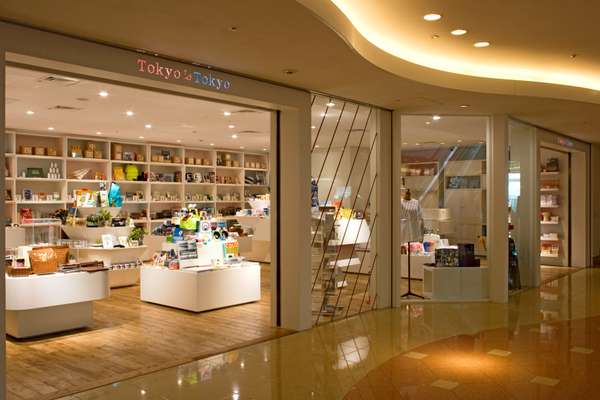
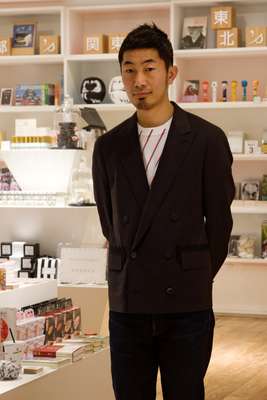
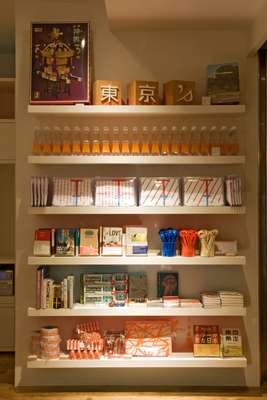

Clever concept 02: tokyo
The best airport gift store
Finally, there’s a new airport gift shop that breaks the tired mould. Tokyo’s Tokyo has just opened at Haneda, Japan’s domestic airport and the fourth busiest in the world. The shop was put together by book shop “curator” Yoshitaka Haba (above right), along with with Yu Yamada (below left) and interior designer Hiroshi Nakamura (below right). “Haneda is the gateway to Tokyo,” he says. “We wanted to create something cutting edge, traditional, intellectual and underground – reflecting Tokyo’s mix.”
Instead of tourist tat, Tokyo’s Tokyo sells Comme des Garçons accessories and Maruman sketch books. For those travelling domestically, there’s a section devoted to each region of Japan, with appropriate books and goods. The literature offer includes a travel theme with books by writers such as Natsume Soseki and Shuksaku Endo. The rest of the shop is divided into mountain, sea and city.
There’s a range of travel necessities – bags, toiletries, stationery – that are a cut above the usual and staff wear cheerful outfits by Theatre Products.
Four buyers
Buyers from London to Tokyo explain what makes their shop work
- Belle Robinson
The Shop at Bluebird, London
What makes The Shop at Bluebird so successful?
It is the combination of great individuals, valued clients, terrific designers and the space itself. At the heart of the shop, customers can peruse at their own leisure without feeling scrutinised. To render warmth to such a potentially austere 1,000 sq m space without losing the intimacy I had envisaged for the store was the first step.
What lessons do you believe most retailers should learn to improve their business?
First, it’s about going back to old school tactics: meet and greet every single customer. Also, we are all guilty of wasting resources on superfluous items. Trim those costs and make sure you invest in the best team you can build.
- Rasmus Storm
Storm, Copenhagen
Who leads the way in retail at the moment?
I was amazed by Tomorrowland – you get a full service there, somehow it has real class. Ralph Lauren also. When you enter, you know immediately that it is Ralph Lauren. Each store is always perfect, authentic and individual.
What lessons do you believe most retailers should learn to improve their business?
Focus on the product and not the concept. At the end of the day, if you overload and over-create universes it somehow turns into empty space. Cut the crap. Educate your staff. Learn about the stories and people behind the product. Customers want to know more now and they ask more questions. Never underestimate them.
- Hirofumi Kurino
United Arrows, Tokyo
What makes United Arrows so successful?
We educate our sales people and put a huge amount of energy to make them true professionals, who can really serve our customers. Also, our merchandising is based on “Trad Mind”, which means we provide timeless real clothing for our customers.
What do you see happening to retail over the next five years?
With the world’s economic situation right now, continuing business is not easy. But at the same time, we could find the solution in the very same problem. People who love fashion are not so directly related to the economic tendencies of the time. In fact, in hard times people get courage from being stylish and comfortable.
- Rachel Ruffing
The King of Greene Street, New York
What makes The King of Greene Street so successful?
We have exclusives and items you won’t find anywhere else in New York. We’re very picky. Things need to be made right. You have to be able to justify that the price tag.
What lessons do you believe most retailers should learn to improve their business?
A lot of buyers here buy the same thing over and over again. New Yorkers love their black but there are other colours. I think we have to open our eyes and horizons to something different. We need to be finding quality, items that are pieces of art and that separate us from the store next door. Everything needs to be fresh.


